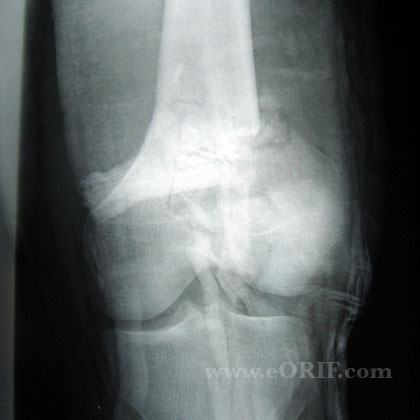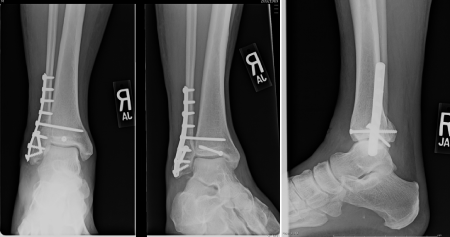
Fractures of the Ankle Joint: Investigation and Treatment Options.

Goost H, Wimmer M, Barg A, Kabir K, Valderrabano V, Burger C. Evaluation of the Syndesmotic-Only Fixation for Weber-C Ankle Fractures with Syndesmotic Injury. CURRENT Diagnosis & Treatment in Orthopedics, Fourth Edition. These are the tibia (shinbone), the fibula (the smaller bone in your leg), and the talus (a bone in your foot). You might need this procedure to treat your broken ankle. Musculoskeletal Eponyms: Who Are Those Guys? Radiographics. Open reduction and internal fixation (ORIF) is a type of surgery used to stabilize and heal a broken bone. It was later modified and popularized by the Swiss orthopedic surgeon, Bernhard Georg Weber (1929-2002), in 1972 2. This classification was first described by the Belgian general surgeon, Robert Danis (1880-1962), in 1949. Usually associated with an injury to the medial side Weber C fractures can be further subclassified as 6Ĭ1: diaphyseal fracture of the fibula, simpleĬ2: diaphyseal fracture of the fibula, complexĪ fracture above the syndesmosis results from external rotation or abduction forces that also disrupt the joint Medial malleolus fracture or deltoid ligament injury often presentįracture may arise as proximally as the level of fibular neck and not visualized on ankle films, requiring knee or full-length tibia-fibula radiographs ( Maisonneuve fracture) Tibiofibular syndesmosis disruption with widening of the distal tibiofibular articulation Weber B fractures could be further subclassified as 9ī2: associated with a medial lesion (malleolus or ligament)ī3: associated with a medial lesion and fracture of posterolateral tibiaĪbove the level of the syndesmosis (suprasyndesmotic) Variable stability, dependent on the status of medial structures (malleolus/ deltoid ligament) and syndesmosis may require open reduction and internal fixation (ORIF) Tibiofibular syndesmosis usually intact, but widening of the distal tibiofibular joint (especially on stressed views) indicates syndesmotic injuryĭeltoid ligament may be torn, indicated by widening of the space between the medial malleolus and talar dome Usually stable if medial malleolus intact treat with CAM Walker or Moon Boot with crutches and weight bear as tolerated with them for 6 weeksĭistal extent at the level of the syndesmosis (trans-syndesmotic) may extend some distance proximally A fibular fracture may also involve damage to the syndesmosis of the ankle.Below the level of the syndesmosis (infrasyndesmotic) Over time, that can lead to ankle arthritis. Without surgery, the ankle joint may heal without being properly aligned. Weber B fractures occur at the level of the tibiofibular ligaments, just above the talar dome, and happen primarily through a mechanism of ankle supination and external rotation (SER).ĭoes distal fibula fracture need surgery?įibula Fracture With Ankle Injury Often, surgery is needed to make the ankle joint stable.

What is a Weber B distal fibula fracture? The fibula is a non-weight bearing bone that originates just below the lateral tibial plateau and extends distally to form the lateral malleolus, which is the portion of the fibula distal to the superior articular surface of the talus. 15 – other international versions of ICD-10 S92. This is the American ICD-10-CM version of S92.
#Cpt orif distal fibula fracture code
What is the ICD 10 code for avulsion fracture?Īvulsion fracture (chip fracture) of talus The 2022 edition of ICD-10-CM S92.

What is the CPT code for ORIF distal fibula fracture?ĬPT® 27827 in section: Open treatment of fracture of weight bearing articular surface/portion of distal tibia (eg, pilon or tibial plafond), with internal fixation, when performed. The lateral malleolus is the distal end of the fibula, whereas the medial and posterior malleoli are part of the tibia. Is the distal fibula the lateral malleolus? The posterior and lateral tibia form the posterior and medial malleolus, respectively. The distal end of the fibula forms the lateral malleolus which articulates with the lateral talus, creating part of the lateral ankle. They are the extension of a lateral collateral ligament injury. What is a distal fibular fracture?ĭistal fibular fractures are the most common type at the ankle and are usually the result of an inversion injury with or without rotation. How do you code a distal fibula fracture?įracture of distal tibia, medial malleolus and distal fibula should be coded to S82. Short description: Oth fracture of upper and lower end of right fibula, init The 2023 edition of ICD-10-CM S82.831A became effective on October 1, 2022.


 0 kommentar(er)
0 kommentar(er)
